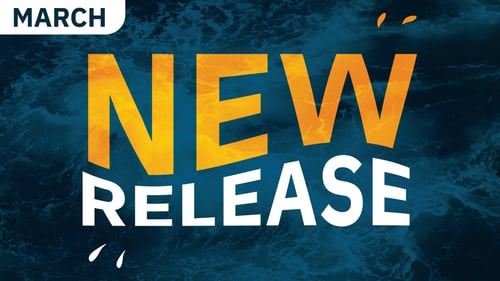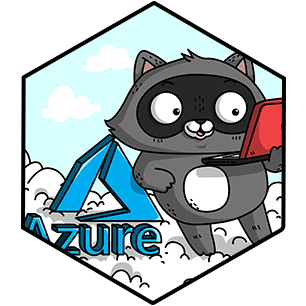Archive from March 2021
The Payara Monthly Catch: March 2021
Published on 31 Mar 2021
by Priya Khaira-Hanks
Topics:
Microservices,
MicroProfile,
JakartaEE
|
0 Comments
It's that time again, our March monthly catch! The "fishes" in our "net" are Java, Jakarta EE, Open Source and Microprofile articles, news stories, videos and podcasts we've found useful and interesting, as well as a few Payara Services updates.
Big news this month is the General Availability release of Java 16. Articles under the 'Java EE' subheading in our Community news section below provide expert opinions on what's new in this release.
Creating a Kubernetes Operator in Java: Foojay JUG Tour
Published on 30 Mar 2021
by Priya Khaira-Hanks
Topics:
Kubernetes,
Conferences,
Foojay
|
0 Comments
Foojay's Virtual JUG tour is in full swing, with the Java community platform organising a succession of online events at JUGs all across the world.
As contributors to the Foojay platform, supporters from the start and members of itsinaugural advisory board, Payara Services was happy to participate. Rudy de Busscher presented his talk, 'Creating a Kubernetes Operator in Java', for the St. Louis Java User Group as part of the tour.
You can now watch this, and also hear Geertjan Wielenga introduce the concept of Foojay to start the talk.
How to Connect Payara to External Hazelcast Grid
Published on 25 Mar 2021
by Rudy De Busscher
Topics:
Production Features,
Hazelcast,
Payara Platform 5
|
2 Comments
The Domain Data Grid feature of the Payara products is powered by the Hazelcast library. It provides the necessary functionality for the Deployment Group (clustering functionality), Cache functionality, CDI cluster singleton, and monitoring data storage within Payara to name just a few features.
Since Hazelcast can cluster multiple instances into a data grid, it is possible to create a Hazelcast grid that comprises the Payara instances and some other instances included in other applications running outside of Payara.
Debunking 6 Popular Myths About Edge Computing
Published on 23 Mar 2021
by Debbie Hoffman
Topics:
Edge Computing,
IoT
|
0 Comments
‘Edge computing’ is a buzzword that has gained popularity over the years. The problem is the term is applied quite broadly, and people use ‘edge computing’ to discuss a variety of topics. Sometimes, it’s spoken of in conjunction with the cloud; other times, with the Internet of Things or fog computing.
In 2018, Gartner suggested that less than 10% of enterprise-generated data was created using edge computing. However, this number is expected to reach 75% by 2025.
This means businesses will soon put more emphasis on edge computing to process data as close to the source generating it as possible. With the increased importance of edge computing, it’s crucial we address a few misconceptions surrounding it.
We’ll start with six, but first…
Getting Started with Jakarta EE 9: Hello World
Published on 18 Mar 2021
by Rudy De Busscher
Topics:
JakartaEE,
Payara Platform 5,
getting started with Jakarta EE
|
0 Comments
Introduction
The release of Jakarta EE 9, at the end of 2020, was in many ways a historic event. The Java Enterprise framework is already 20 years old, having its first release in 1999. It has changed names a few times but the main concepts of the first release can still be found in this new release. During all those years, it has adapted itself to keep it up to date but has always adhered to its main principle of stability and backward compatibility.
Using a Data Source with JDBC (Video)
Published on 16 Mar 2021
by Debbie Hoffman
Topics:
Payara Platform,
Data source
|
0 Comments
JDBC is part of the Java SE specification. In this simple demo video by Rudy De Busscher, learn how to define the data source within the JDBC framework in under 8 minutes.
Deploying to Payara Deployment Group Using the Maven Cargo Plugin
Published on 12 Mar 2021
by Rudy De Busscher
Topics:
Clustering,
Payara Server 5,
deployment group
|
2 Comments
Introduction
The Apache Maven Cargo Plugin allows you to deploy your application to a Payara Server, running locally or remotely. Using Maven as a build tool is an easy way to immediately deploy the application during the build to a test or production server.
We have created a custom version of the Cargo Plugin which also supports the Deployment Group feature of the Payara Server.
Additional MicroProfile Config Sources Added in Payara Platform Enterprise 5.26.0
Published on 10 Mar 2021
by Debbie Hoffman and Rudy De Busscher
Topics:
New Releases,
Payara Enterprise
|
0 Comments
The March Payara Platform Enterprise Edition release (request here) includes 3 bug fixes, 4 improvements, and 7 additional MicroProfile Config Sources. You can see a more detailed overview of the fixes, improvements, and new features included in Payara Platform Enterprise Edition 5.26.0 in the Release Notes here.
Configuration of applications should not be done within the application itself, but externally. We’ve expanded the sources from where the configuration values could be read to support third-party configuration services and cloud providers in the March Payara Enterprise release:
Payara Server on Microsoft Azure (Video Series)
Published on 08 Mar 2021
by Debbie Hoffman and Rudy De Busscher
Topics:
Microsoft Azure,
Payara Platform
|
4 Comments
In this video series created by Rudy De Busscher you’ll learn how to run an application which connects to a PostgreSQl database with Payara Server on the Microsoft Azure Platform in five short videos.
The Payara Monthly Catch: February 2021
Published on 03 Mar 2021
by Priya Khaira-Hanks
Topics:
Microservices,
MicroProfile,
JakartaEE
|
0 Comments
In our February Monthly Catch, we’ve rounded up a wide range of the most useful learning materials, community news pieces, videos and podcasts from the world of Java, Jakarta EE and MicroProfile - and of course provided updates from Team Payara!
As we progress into the year, the new releases of Jakarta EE - including the breaking namespace change - and MicroProfile are becoming more embedded and discussed. For example, it was great to see Dalia Shea from JetBrains discuss using the new “jakarta” namespace, and Michael Redlich at InfoQ summarizing the JakartaOne conference where Jakarta EE 9 was officially announced.
We’re also seeing a lot of looking round the corner to what’s next for our community: to JDK 17, as well as the innovations coming through Project Loom and Project Panama.
It also seems to be unofficial survey season! We’ve launched our own, Omnifaces have published its survey’s fascinating results looking into JakartaEE and MicroProfile, and you still have time to answer questions forthe Snyk and Azul survey that came out this month. It’s exciting to see so many opportunities for people to feedback, drive and shape the future of Enterprise Java and its associated technologies.
If you enjoy the content, make sure to follow us on our Twitter and LinkedIn, for the very latest news as it comes in.
Enjoy!
Payara Community GitHub Policy
Published on 02 Mar 2021
by Debbie Hoffman
0 Comments
We’ve recently formalized our GitHub Policy for how we handle user requests for bug fixes and enhancements to ensure defects and bugs in the Payara Platform are discovered and addressed as soon as possible, and to give the community an opportunity to help decide which new features and product enhancements go into development.
Below is a summary of the policy and how to get your questions answered, submit a bug report, or request an enhancement. You can read the complete Payara GitHub Policy here.
Payara Cloud – So Easy Even the Marketing Team Could Use It
Published on 01 Mar 2021
by Debbie Hoffman
Topics:
Payara Cloud
|
0 Comments
Payara Cloud Experiment Lab Report
Introduction
Before the Payara Cloud Closed Beta testing began we tried an experiment to see if Payara Cloud is as easy to use as we say it is by having a member of the marketing team (me!) test the product. I’ve been a copywriter/content writer specializing in technology topics for over 18 years, so while I can’t claim to be a stranger to the tech industry, my knowledge is more focused around the benefits of using certain types of technology rather than the inner details of how it works. The idea of our little "science experiment" was if I could successfully deploy an application without any previous knowledge, then surely more experienced tech teams would find it even easier to use.









